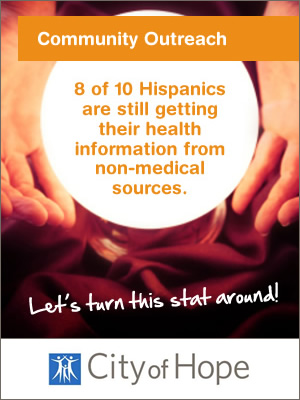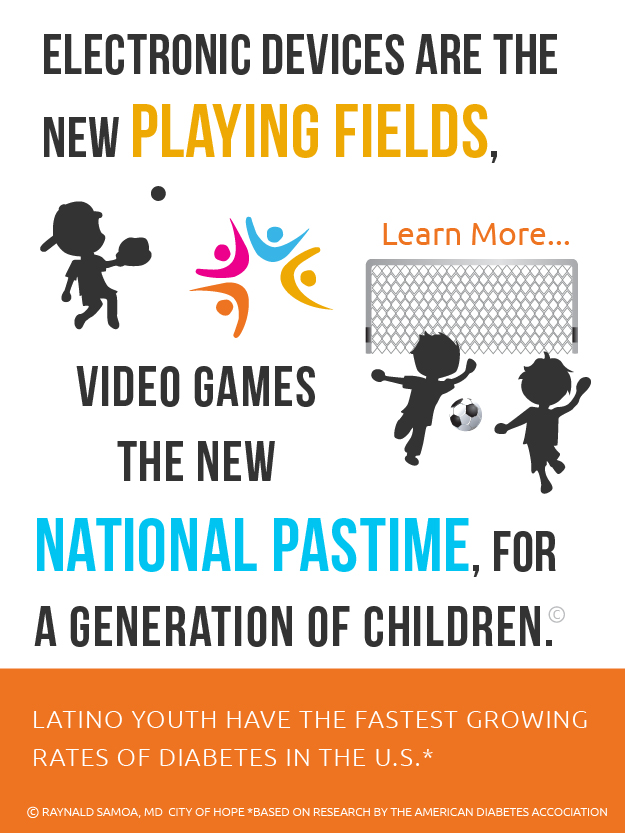
CVS Health is Leading Efforts to Serve the Demographic Shift with Outreach to Hispanic Talent and Consumers (Part 2)
10/06/2014 11:05AM | 11081 viewsPart one of this interview with David Casey, Vice President, Workforce Strategies and Chief Diversity Officer at CVS Health, focused on the company’s overall diversity strategy and talent development efforts with regards to the cultural demographic shift – one in which Hispanics are at the fore as the largest and fastest growing demographic group in the U.S.
After discussing its industry-leading efforts to build a talent pipeline and develop its diverse talent, HHL Senior Editor, Marisa Salcines, asked what CVS Health is doing on the consumer side – from building a strong community presence with Hispanics and their families to offering culturally relevant products and services to serve their specific needs – and how these efforts are connected to the professional development of its more than 200,000 employees.
Marisa: You said that we need to build a talent pipeline by exposing young people to STEM careers at an early age, but that the results won’t be seen for some years down the road. What are you doing in the interim, to connect with the cultural demographic shift and the Hispanic community in particular?
David: A few years ago, we moved from a traditional mission statement and developed a “purpose statement” – and that purpose is to help people on their path to better health. You might have heard one result of this: we are removing tobacco products from our shelves, and we’ll also be providing tobacco cessation information to support those in our communities trying to quit.
So along with our efforts to increase the representation of Hispanics in healthcare and STEM professions, we’re engaging with the community more directly as well. One of our flagship programs that we established to reach out to the community is called “Projecto Salud,” or Project Health. These are free healthcare screenings that we roll out each year at hundreds of CVS/pharmacy locations – mostly in multi-cultural Hispanic and African American communities.
At these events, people from the community can consult with bilingual nurse practitioners and physician assistants; they can get referrals to low or no-cost medical facilities if they don’t have a primary care physician; and they can review their medications one-on-one with a CVS pharmacist. Last year we added assistance with the Affordable Care Act (ACA), so that people could better understand it and participate in the healthcare exchanges with less confusion.
The fact that about one-third of the people coming in for screenings are at elevated risk levels or have chronic conditions like high blood pressure or diabetes validates that we are moving in the right direction – providing value to a community that hasn’t had equitable access to affordable and quality health care.
Few things are more personal than talking about your health, so Project Health recognizes the importance of building relationships with the community, and being a part of the community, so that we can earn the trust to have those intimate discussions with people.
Marisa: A recent article in the Los Angeles Times (“The virtual doctor visit”) stated that CVS Health is the country’s largest provider of retail clinics. As the Hispanic population continues to grow – heading to nearly a third of the U.S. population by 2050 – what else is CVS Health doing to serve this consumer group and their unique needs?
David: We’ve been focused on serving Hispanic consumers for a number of years in our stores and pharmacies, as customers and as community members. We make sure we have an assortment of multi-cultural signage in our stores and products on our shelves. For example, cosmetics are available for all ages and different skin tones. In our pharmacies, distribution and descriptions of medication are available in multiple languages.
In our front store, we make sure to stock products that resonate with the Hispanic community, such as the popular household cleaner Fabuloso. It’s also important for us to source products from Mexico, Columbia and other countries of origin to meet the specific needs of our customers. We’re also expanding our seasonal offerings with culturally relevant promotions around some of the more prominent celebrations and holidays that are important to the community.
Marisa: As culture and heritage get recognized on the consumer side, how is CVS Health incorporating that intelligence into the professional development of its employees?
David: With more than 200,000 colleagues, we have to think about professional development on a very large scale. We must serve the needs of the many while being in touch with and customizing development tools and resources for the specific needs of colleagues from diverse backgrounds.
That said, all of our colleagues have access to at least 50 developmental courses on diversity related topics alone in our learning management system to help them better understand how to manage their own careers. And we’re learning from them too; we’re getting a better understanding of cultural nuances and needs as they relate to professional development by leveraging the colleague resource groups that we have in place. Three of these were formed specifically for Hispanic colleagues. We have a Latino mentoring group, a Hispanic/African American group and a Portuguese/Latino networking group.
To be sanctioned by the organization, each colleague resource group must have in place a business plan that articulates and documents how they’re going to help the company drive our overall diversity strategy across four pillars: workforce representation, colleague engagement, talent development and marketplace diversity.
One of the most powerful benefits of these groups is the greater opportunity to network internally – with access to senior leadership that they might not get in the course of their everyday work. Larry Merlo, our CEO, and each one of his direct reports has signed on to sponsor a resource group. This means that a colleague five or six levels below the CEO can have direct engagement with the most senior level leadership.
This is important because studies have shown higher promotion rates for women and people of color who have exposure to senior leadership. Individual contributors also get a chance to develop leadership muscle by leading a committee or a local chapter or even the colleague resource group itself.
Marisa: What makes CVS Health unique in the ways it is leading and redefining diversity management; especially, how are you connecting the dots between your diverse workforce and the diversity amongst your consumers and the communities where you do business?
David: We have a number of best practices in place and one of the strongest diversity management strategies that I’ve seen in my experience. Part of that which makes us different from other organizations I think is that we’re focused on working very hard to show the connection between how we manage a diverse workforce and what we do in the marketplace.
Recruiting diverse talent and focusing on talent management simultaneously are fine up to a point, but if you can’t articulate the correlation – the relationship between the work you are doing on the talent side and what is driving your business forward on the consumer side – it will be difficult to make the strategy sustainable.
Another piece of our strategy that makes us unique is that we’re always looking to maintain an equal balance of both attribute diversity and behavioral diversity. It’s one thing to go out and recruit people that reflect the communities we operate in. But as a national company serving the entire country, we’ve got to also understand the behavioral nuances and expectations of all these different demographics as they enter into our workforce. So we put a lot of focus on understanding and exhibiting inclusive behaviors to retain the diverse talent that we attract. When someone comes to work at CVS Health, we want them to be able to bring their whole self to the company and not feel like they have to leave any part of who they are at the door.











Post your Comment
Please login or sign up to comment
Comments